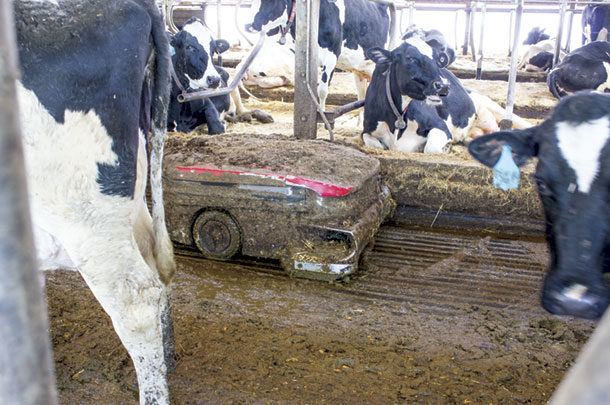Dairy cows might best be known for their milk, but as any farmer can attest, that is not the only substance they produce in abundance.
Keeping barns clean and free of waste is more than just for looks. A manure-free barn means improved cow health and medical outcomes, more sanitary milk and an overall healthier, more productive environment.
Traditional manure scraping systems remove waste from the barn. Choosing the right system for your dairy, taking into consideration optimal designs and cost-effectiveness, provides a collection system that keeps the facilities clean and sanitary while also leading to better health outcomes for the dairy herd.
It is a necessary but extremely messy job.
Barns have been outfitted with manure scrapers for decades. Yet, with technology evolving, traditional systems are now becoming inefficient as they typically leave wide swaths of the barn untouched, left to be cleaned manually.
As a result of their design, scraper blades are capable of moving waste effectively but leave behind track lines and are unable to clean out corners and other tight spaces.
Plus, scrapers only operate at certain times when lanes are clear. This often means cows stand in accumulated waste between scrapings.
Stagnant manure presents several health risks in the form of fumes that can cause respiratory problems in cows and humans. Prolonged exposure to a cow’s skin or hooves can cause permanent health problems or severe, potentially fatal infections.
When a traditional scraper system is cleaning, it creates a pool of manure cows have to stand in or navigate around. It does that a handful of times during the day.
Flush barns work similarly as a wave of manure is pushed through the barn every time the system runs through a cycle. Depending on where the cows are at in this moment, hooves and legs may be exposed to large amounts of manure that are then transferred to wherever the cow moves.
The versatility of robotic manure collection systems has hidden benefits.
It is not that scraper systems are not effective ways to move manure out of the barn. The issue is efficiency and impact on labor. Every corner or alley that the scraper does not get clean is more work for the farm operator and the farm operator’s crew.
Robotic systems, meanwhile, vacuum up or otherwise corral manure as they go. Many operate 24 hours per day, ensuring that manure is not allowed to build up and sit in barns for extended periods of time.
Problem areas that might build up in places out of reach of traditional scrapers are instead addressed immediately, preventing any future challenges. They work around the activity in your barn rather than repeatedly shoving their way through on a set path.
It keeps cows’ legs much cleaner, as well and when they lay down, they are not bringing as much manure into the stalls.
Robotic systems save time, money – in the form of labor costs – and headaches. Most robotic systems do not occupy a ton of real estate once they are set up in a barn. Not so with scraper systems, which require more cumbersome machinery to be installed alongside them.
That makes it cheaper and easier to build new barns or to retrofit an existing structure when you use a robotic manure cleaning system.
You have more options and more potential to save money. Plus, most robotic systems provide tons of data points for operators to review to ensure efficacy and to help them identify and mitigate potential problems immediately. Modern farming is as much about knowledge and data as it is about anything else.








